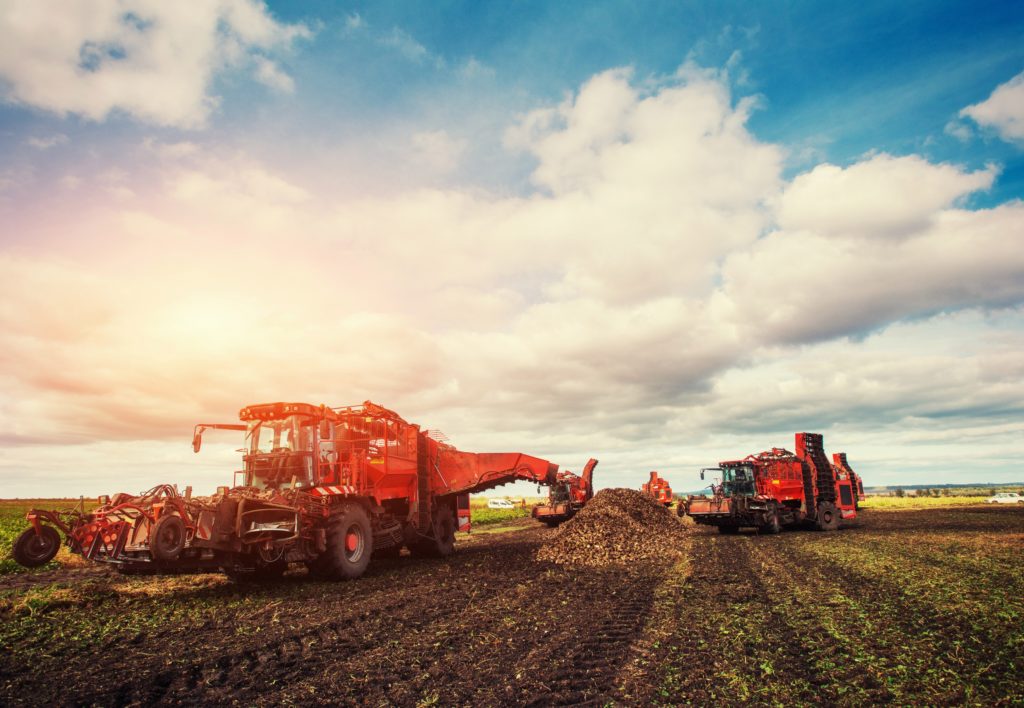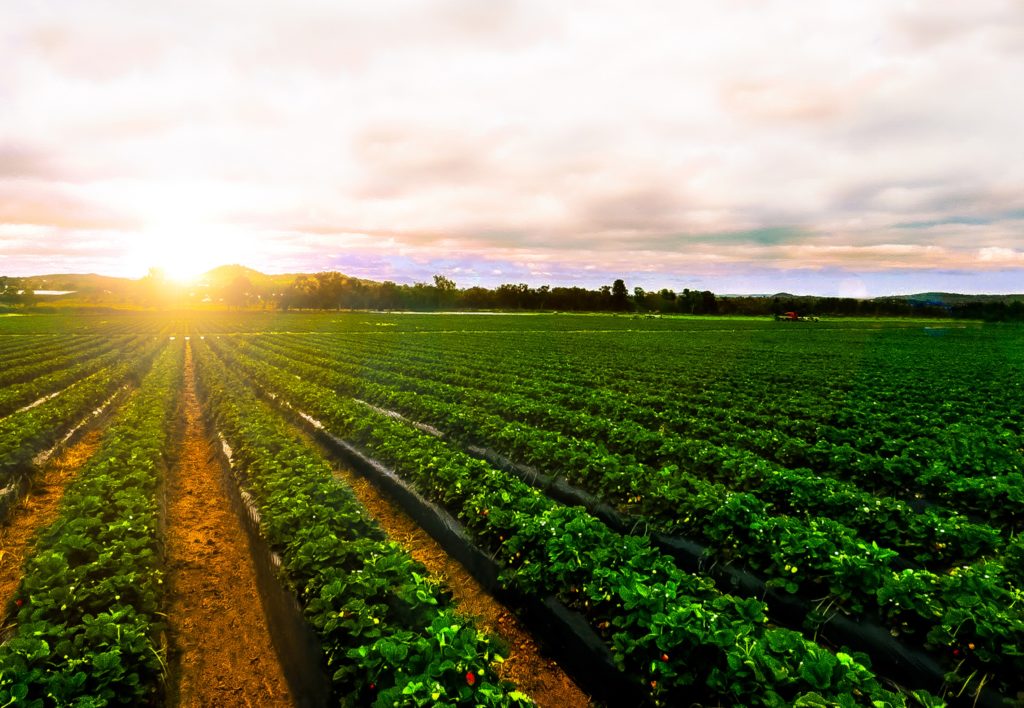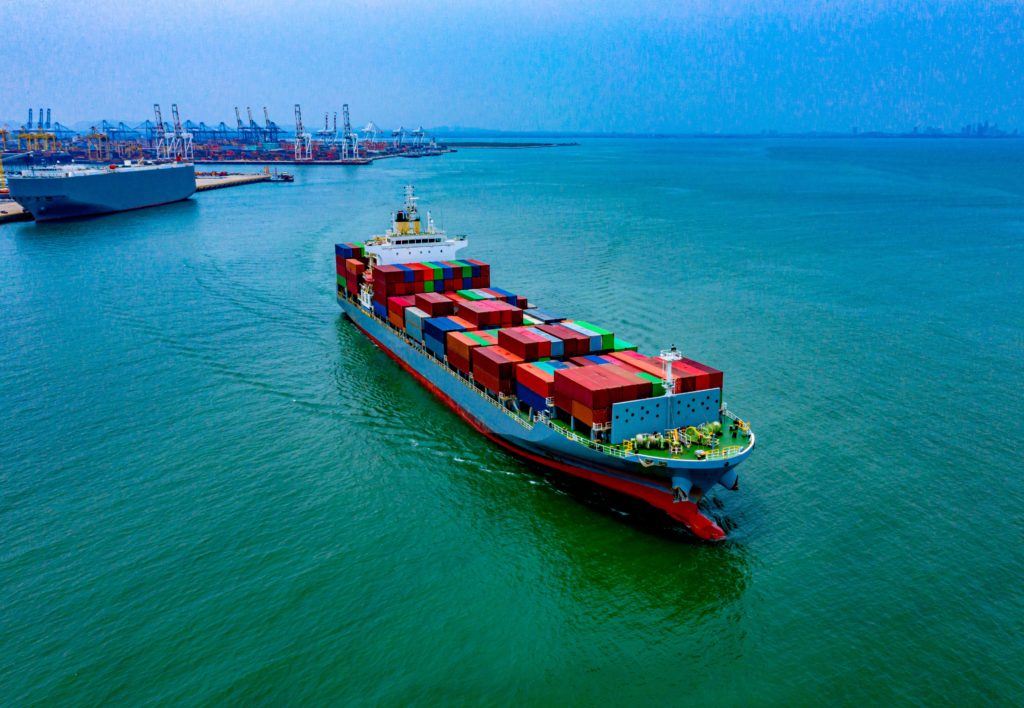Produce Safety
FSMA Produce Safety Rule
What is FSMA Produce Safety Rule?
Standards for the Growing, Harvesting, Packing, and Holding of Produce for Human Consumption
The Produce Safety Rule establishes mandatory science-based, minimum standards for the safe growing, harvesting, packing, and holding of fruits and vegetables grown for human consumption. These standards are designed to work effectively for food safety across the wide diversity of produce farms.
The key requirements include:
- Agricultural Water: compliance with current agricultural water requirements
- Biological soil amendments of animal origin and human waste and treatment processes
- Domesticated and wild animals: grazing animals, working animals, and animal intrusion
- Equipment, tools, and building
- Personnel Qualifications and Training including contract harvesters
- Health and Hygiene: measures to prevent ill or infected persons from contaminating covered produce
- Sprouts
In-Depth Coverage: Importing Food Products
- What is FDA Food Safety Modernization Act (FSMA)?
- Prior Notice of Imported Foods
- FDA Food Facility Registration
- Risk-Based Preventive Controls for Human Food
- Risk-Based Preventive Control for Animal Food
- Protect Food against Intentional Adulteration
- What is Foreign Supplier Verification Program (FSVP)?
- What is FSMA Produce Safety Rule?
FSMA: Final Rule for Produce Safety
Agricultural Water
Agricultural water can be a major conduit of pathogens that can contaminate produce. Requirements for agricultural water quality and testing are designed to detect contamination by feces, which may be accompanied by bacteria that cause disease.
Biological Soil Amendments
There are requirements for the use of biological soil amendments of animal origin, which include manure and compost, which are added to soil to improve its ability to support plant growth. These requirements will help reduce the likelihood of potentially dangerous bacteria entering the food supply.
Domesticated and wild animals
There are often animals on farms, such as livestock, and even wild animals, like deer. During harvest, farmers are required to take all reasonably necessary steps to identify potential contamination (including contamination by animals) and not harvest the affected produce. In some circumstances, farmers must also take steps to assess potential contamination by animals during the growing season, in anticipation of these requirements at harvest.
In-Depth Coverage: Country of Origin
- Country of Origin of Imported Merchandise
- Customs Ruling: Country of Origin
- Country of Origin: Food Products
- Country of Origin: Chemical and Pharmaceutical Products
- Country of Origin & Country of Manufacture: CBP vs. FDA
- Country of Origin: Substantial Transformation or Country of Assembly Test
- Country of Origin and Free Trade Agreement
- Country of Origin and Section 301
Equipment, tools, and building
There are standards related to equipment, tools, and buildings to prevent problems, such as poor sanitation, from contaminating produce. Equipment and tools subject to the requirements are those that are intended to, or likely to, contact covered produce; and those instruments or controls used to measure, regulate, or record conditions to control or prevent the growth of microorganisms of public health significance.
Examples include knives, implements, mechanical harvesters, waxing machinery, cooling equipment (including hydrocoolers), grading belts, sizing equipment, palletizing equipment, equipment used to store or convey harvested produce (such as containers, bins, food-packing material, dump tanks, flumes, and vehicles or other equipment used for transport that are intended to, or likely to, contact covered produce). Buildings covered by these requirements include greenhouses and germination chambers.
Personnel Qualifications and Training
Farm workers handling covered produce and/or food contact surfaces, including their supervisors, must be trained on the importance of health and hygiene. Farms must take steps to prevent contamination of produce and food-contact surfaces by people who are sick. This includes instructing farm workers to notify their supervisors if there’s an issue with their health or hygiene that could compromise the safety of the produce.
Health and Hygiene
Measures must be taken to prevent contamination of covered produce and food contact surfaces with microorganisms of public health significance from any person with an applicable health condition (such as communicable illnesses that present a public health risk in the context of normal work duties, infection, open lesion, vomiting, or diarrhea).
In-Depth Coverage: Marketing and Advertising Compliance
- Federal Trade Commission (FTC) Advertising Rules
- Made in USA Standard
- FTC Regulation on Environmental Claims
- Adverting and Marketing on the Internet
- Label Claims for Conventional Foods and Dietary Supplements
- Dietary Supplement Advertising: What is FTC's Truth-in-Advertising Law?
- USDA Country of Origin Labeling (COOL)
- FTC Rules & Regulations on Food Advertisement
Any person must be excluded from working in any operations that may result in contamination of covered produce or food contact surfaces with microorganisms of public health significance when the person is shown to have or appears to have, an applicable health condition until the person’s health condition no longer presents a risk to public health.
Personnel must be instructed to notify their supervisor(s) (or a responsible party) if they have, or if there is a reasonable possibility that they have an applicable health condition.
When handling covered produce or food contact surfaces during covered activities, personnel must thoroughly wash hands before starting work, before putting on gloves, after using the toilet, upon return to the work station after any break or other absence from the work station, as soon as practical after touching animals (including livestock and working animals) or any waste of animal origin, and at any other times when the hands may have become contaminated in a manner that is reasonably likely to lead to contamination of covered produce with known or reasonably foreseeable hazards.
In-Depth Coverage: Importing Medical Device
Sprouts
Sprouts have been associated frequently with foodborne illness outbreaks. The final rule includes testing and other standards for producing sprouts to prevent contamination with dangerous microbes, such as Listeria monocytogenes.
What produce is covered by this rule?
(1) Fruits and vegetables such as (21 CFR 112.1):
A. almonds, apples, apricots, apriums, Artichokes-globe-type, Asian pears, avocados,
B. babacos, bananas, Belgian endive, blackberries, blueberries, boysenberries, brazil nuts, broad beans, broccoli, Brussels sprouts, burdock,
C. cabbages, Chinese cabbages (Bok Choy, mustard, and Napa), cantaloupes, carambolas, carrots, cauliflower, celeriac, celery, chayote fruit, cherries (sweet), chestnuts, chicory (roots and tops), citrus (such as clementine, grapefruit, lemons, limes, mandarin, oranges, tangerines, tangors, and uniq fruit), cowpea beans, cress-garden, cucumbers, curly endive, currants,
D. dandelion leaves,
F. fennel-Florence,
G. garlic, genip, gooseberries, grapes, green beans, guavas,
H. herbs (such as basil, chives, cilantro, oregano, and parsley), honeydew, huckleberries,
J. Jerusalem artichokes,
In-Depth Coverage: Customs Valuation
K. kale, kiwifruit, kohlrabi, kumquats,
L. leek, lettuce, lychees,
M. macadamia nuts, mangos, other melons (such as Canary, Crenshaw, and Persian), mulberries, mushrooms, mustard greens,
N. nectarines,
O. onions,
P. papayas, parsnips, passion fruit, peaches, pears, peas, peas-pigeon, peppers (such as bell and hot), pine nuts, pineapples, plantains, plums, plumcots,
Q. quince,
R. radishes, raspberries, rhubarb, rutabagas,
S. scallions, shallots, snow peas, soursop, spinach, sprouts (such as alfalfa and mung bean), strawberries, summer squash (such as patty pan, yellow and zucchini), sweetsop, Swiss chard,
T. taro, tomatoes, turmeric, turnips (roots and tops),
W. walnuts, watercress, watermelons, and
Y. yams.
(2) Mixes of intact fruits and vegetables (such as fruit baskets).
In-Depth Coverage: USDA-Regulated Products
- Importing USDA-Regulated Food Products
- Import Regulation by USDA Agricultural Marketing Service (AMS)
- Food Products – FDA or USDA Regulated
- Country of Origin Labeling
- Importing Animals, Animal Products, and Biologics into the US
- Importing Meat, Poultry, and Egg Products into the US
- Labeling and Marking of Imported Meat, Poultry, and Egg Products
- USDA National Organic Program (NOP)
- Agricultural Safeguards and USDA Licensing
What produce is not covered by the produce safety rule?
Certain produce is excluded from the produce safety rule. Specifically, the rule does not cover produce that:
- is grown for personal or on-farm consumption
- is not a “raw agricultural commodity.” (A raw agricultural commodity is any food in its raw or natural state).
- is identified as “rarely consumed raw”. The “rarely consumed raw” list at 21 CFR 112.2(a)(1) is exhaustive and contains the following fruits and vegetables: asparagus; black beans, great Northern beans, kidney beans, lima beans, navy beans, and pinto beans; garden beets (roots and tops) and sugar beets; cashews; sour cherries; chickpeas; cocoa beans; coffee beans; collards; sweet corn; cranberries; dates; dill (seeds and weed); eggplants; figs; horseradish; hazelnuts; lentils; okra; peanuts; pecans; peppermint; potatoes; pumpkins; winter squash; sweet potatoes; and water chestnuts.
- In addition, produce that will receive commercial processing that adequately reduces microorganisms of public health concern (i.e., a “kill step”) is eligible for exemption from the rest of the rule if certain requirements are followed, including making a disclosure statement and keeping certain documentation.
Covered and Not-covered Farms
The Produce Safety Rule does not cover farms that have an average annual value of produce sold during the previous 3-year period of $25,000 or less, adjusted for inflation. To determine whether a farm is potentially a covered farm with respect to the $25,000 threshold, the farm would need to calculate the average annual monetary value of their produce sales during the previous three years.
Qualified exemption from the Produce Safety Rule
If a farm’s average annual produce sales exceed $25,000, the farm may still be eligible for a qualified exemption and modified requirements if it meets two requirements:
(1) The farm must have food sales averaging less than $500,000 (adjusted for inflation) per year during the previous 3 years; and
(2) during that time, the farm's sales directly to qualified end-users must have exceed sales to others.
A qualified end-user, with respect to a food, means either the consumer of the food (does not include a business); or a restaurant or retail food establishment that is located:
(1) In the same State or the same Indian reservation as the farm that produced the food; or
(2) Not more than275 miles from such farm.
What is Restaurant?
Restaurant means a facility that prepares and sells food directly to consumers for immediate consumption and does not include facilities that provide food to interstate conveyances, central kitchens, and other similar facilities that do not prepare and serve food directly to consumers.
Entities in which food is provided to humans, such as cafeterias, lunchrooms, cafes, bistros, fast food establishments, food stands, saloons, taverns, bars, lounges, catering facilities, hospital kitchens, day care kitchens, and nursing home kitchens are restaurants; and
Pet shelters, kennels, and veterinary facilities in which food is provided to animals are restaurants.
What is a retail food establishment?
A retail food establishment is an establishment that sells food products directly to consumers as its primary function, i.e., the annual monetary value of sales of food products directly to consumers exceeds the annual monetary value of sales of food products to all other buyers. Grocery stores and convenience stores are examples of retail food establishments.
Quick Link To U.S. Customs & Import Requirements
Customs Clearance and Import Requirements
- Entry of Imported Merchandise
- What is Section 321 Entry?
- What is Automated Commercial Environment (ACE)
- What is an Automated Broker Interface (ABI)?
- Who is Ultimate Consignee?
- What is Non-Resident Importer Program?
- Country of Origin of Imported Merchandise
- What is the Country of Assembly?
- What if the FDA's Country of Manufacture?
- Marking of Country of Origin on U.S. Imports
- What is Customs Bond?
- Reconciliation Prototype and Bond Rider
- Who Needs a Customs Broker?
- What is Customs Ruling Program?
- Classification of Imported Goods
- How is imported merchandise appraised?
- What are Import Quotas?
- What are Trade Remedy Duties?
- Antidumping Duty (AD) and Countervailing Duty (CVD)
- What is Foreign Trade Zone (FTZ)?
- What is Importer Security Filing (ISF)?
- What is Temporary Importation under Bond (TIB)
- What is In-Bond Process?
FDA-Regulated Products and Import Requirements
- What is Food Safety Modernization Act (FSMA)?
- Prior Notice of Imported Foods
- Food Facility Registration
- Risk-Based Preventive Controls for Human Food
- Risk-Based Preventive Control for Animal Food
- Standards for the Growing, Harvesting, Packing, and Holding of Produce for Human Consumption
- What is Foreign Supplier Verification Program (FSVP)?
- Protect Food against Intentional Adulteration
- FDA Regulated Product in Foreign Trade Zone (FTZ)
- Entry Review Process for FDA Regulated Products
- Country of Origin VS Country of Manufacture
- Foods Regulated by FDA or USDA: What is the Difference?
- Label and Labeling Claims for Conventional Food and Dietary Supplements
- What is USDA Country of Origin Labeling (COOL)?
- Import for Export of FDA Regulated Products
- FDA Regulated Products in Personal Baggage or Sending by Mail or Courier
- International Mail Facility (IMF) and FDA Regulation
- Importing Biological Product Regulated by CBER
- Importing Cosmetics and Voluntary Cosmetic Registration Program (VCRP)
- Importing Drugs into the U.S.
- Importing OTC Drugs into the U.S.
- Importing Veterinary Drugs into the U.S.
- Importing Tobacco Products into the U.S.
- Importing Medical Devices into the U.S
- Importing Food Products into he U.S.
- Importing Radiation-Emitting Products into the U.S.
Guidance on customs & logistics solution for traditional and e-commerce importers and exporters
Importer Security Filing (ISF)
An ISF is required when cargo (ocean only) laden on vessel at a foreign port is destined for shipment to the U.S. Under ISF rule, some importing information and details regarding cargo must be transmitted to the CBP at least 24 hours before goods are loaded onto the vessel.
Customs Clearance
All goods imported into the U.S. are required to be declared to CBP. Our customs broker will help you stay in compliance with customs laws and regulations and clear your goods quickly and efficiently with our electronic Automated Commercial Environment (ACE) and Automated Broker Interface (ABI) Single Window System.
Freight Forwarding
Looking for a freight forwarding partner? To move your cargo from its current location through customs to its final destination we will partner with you to find the best way for your business. Whatever your transportation, logistics or customs clearance needs, we will do our best to customize a solution for your needs.
Warehousing & Distribution
Our warehouse facility offers great potential for serving as a regional hub with over 145,000 SF storage capacity close to Los Angeles Airport & Los Angeles/Long Beach Sea port. With our extensive experience in freight services, your import/export cargo will be handled quickly and effectively.
Section 321 Entry
Section 321 entry allows importing free of duty and tax for shipments imported by one person on one day having a fair retail value in the country of shipment not more than $800. We provide our resident and non-resident clients with dedicated ACE eManifest solutions for Section 321 entry of all modes of transportation.
Non-resident Importer Program
If you want to sell your products in U.S. marketplaces, but you are a business owner located outside of the U.S. and do not have an entity or presence in the U.S., you need to be established as a Foreign Importer of Record before your products can be imported into the U.S. We can help you.
E-Commerce
The Internet has made it easy to find and purchase items from almost anywhere in the world. Our e-commerce experts will help you find the right solution for your international transportation, customs clearance, and delivery to your final destination. We also provide value-added repackaging, warehousing and distribution services.
















